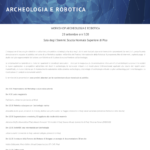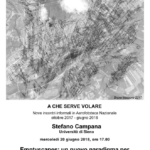The sample area in this case study lies in Central Italy, in Maremma, a wide costal region in southern Tuscany and northern Lazio bordering the Tyrrhenian Sea.
Rusellae was an important Etruscan and subsequently Roman city, which survived until the Middle Ages before finally being abandoned in the 12th century.
From the late 1970s onwards the University of Siena has fostered a systematic programme of landscape and archaeological investigation within the Maremma area .
As a result of this work the area now has a substantial database and GIS, developed mainly through the examination and analysis of the relevant archaeological and ancient literature, documentary and epigraphic sources, place-name evidence and systematic field-walking survey, along with a significant number of open-area excavations.
After about 35 years of rigorous research work it could be argued that this region is among the most intensively studied areas within the Mediterranean.
However, despite the large amount of information assembled and examined over the years, we have to acknowledge that many important archaeological questions still remain unresolved. These may perhaps be categorised under two main keywords: ‘empty spaces’ and ‘empty phases’.

